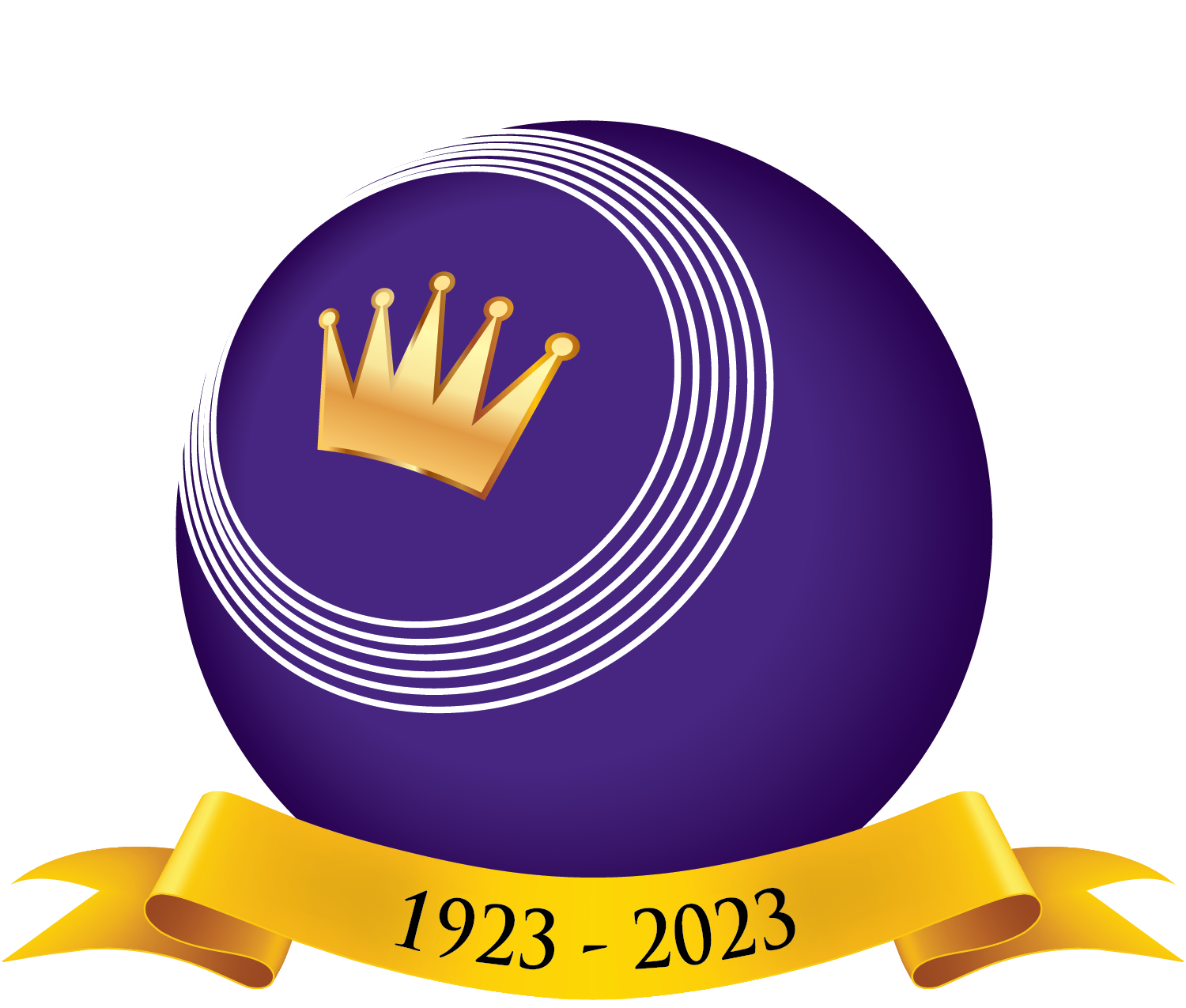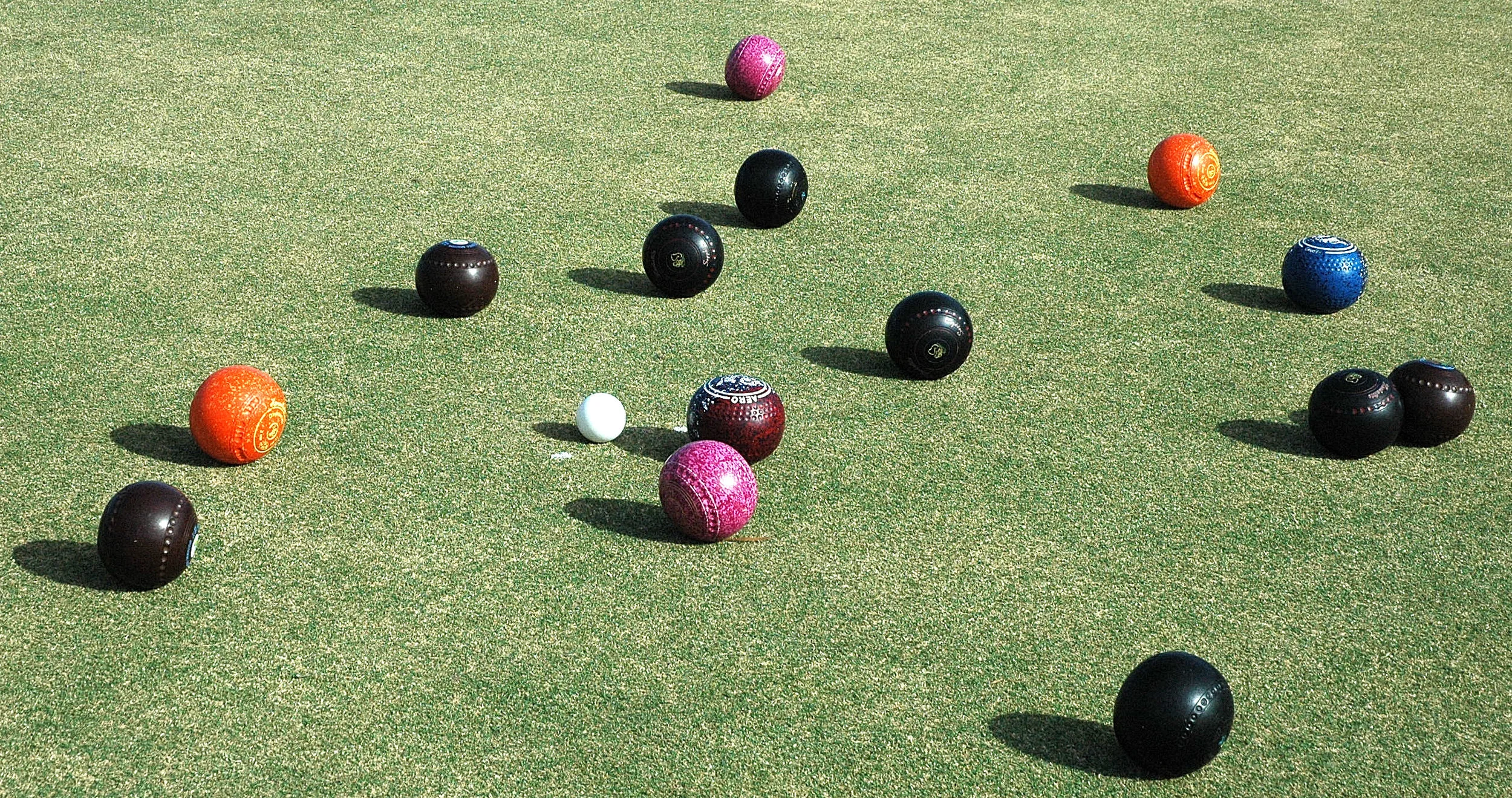Key Rules and Procedures
Starting the Game
A coin is flipped or a bowl is rolled (pick small circle or large circle) to determine who gets to choose. Winner gets choice of going first (possession of the mat) or second (last bowl of the end).
Advantage of going first: - you get to control where the mat is placed and how long of a jack you want to play.
Advantage of going second: - you get last bowl of the end.
Setting the Mat
The mat may be placed such that the front of the mat is touching or past the two meter mark all the way up to the first hog line. It is always placed so that it is centered. If there is a line denoting the center of each rink place the mat such that the mat is centered on that line. If there are no lines then ask for confirmation from your skip regarding whether the mat is properly centered.
Rolling the Jack
Once the mat is set you can now roll the jack. A properly rolled jack must:
Be at least 21 meters from the front of the mat.
Be inbounds when it stops rolling.
Did not go into the ditch.
If all of these conditions are not met then the mat and rolling of the jack are passed to the opponents.
Of note:
From the two meter mark to the second hog line marker is 21 meters. Therefore if you place the mat such that the front of it is just touching the two meter mark you must roll the jack at least as far as the second hog line.
Because the minimum distance for a jack is 21 meters, however far you place the front of the mat past the two meter mark, you must roll the jack at least that far past the second hog line. That is why the skip will ask the lead how far past the two meter mark is the front of the mat. Then they will confirm that the jack is at least that far past the second hog line. If not, the jack is returned and the other team gets to set the mat and roll the jack.
From the first hog line to the far two meter mark is 21 meters. Therefore, if the mat is set all the way up to the first hog line (as far forward as it can go) then the jack must be rolled to at least the two meter mark, but not into the ditch.
If the jack is rolled past the two meter mark but not into the ditch it gets spotted at the two meter mark with the front of the jack just touching the two meter mark.
If both teams fail to properly roll the jack then it gets spotted on the two meter mark and the team that was first gets to place the mat anywhere between the two meter mark and the first hog line.
Possession of the Head
As soon as the previous bowl being rolled comes to a stop possession of the head transfers to the other team. At that point the skip who no longer has possession of the head should move out of the head and stand at least two meters behind. The skip who now has possession of the head can move into the head and communicate with their bowler on the mat. Communication between bowlers on the other team should stop.
Of note:
You may hear a skip use the term “it is my head” or “it is not your head” to the other skip.
That is simply an indication to the other person that they should now move out of the head and allow your team to discuss and communicate.
An exception is the case of a toucher. Should the previous bowl touch the jack the skip owning that bowl is allowed a reasonable amount of time to mark the toucher. After it is marked they must move out of the head.
Communication between Players
Technically, communication between skips and leads/vice skips can only occur when your team has possession of the head and ideally when the next bowler to roll is either on or near the mat.
What information is typically communicated:
How many points up or down
Which is the shot bowl
Where is the jack
How far short or past was my last bowl
What is my best shot
Where do I have to be to get the point
Completion of an End
After the last bowl is rolled in an end, the last player to bowl should pick up the mat and put it on the bank. This signals to those in the head that the end is over. At that point, the leads in a game of pairs or the vice skips in a game of triples or fours must determine the score for the end. The two people must agree that a bowl is a point before it is moved.
Once it is agreed that bowl should be picked up and placed on the scoring towel.
Then they should determine which bowl is the next closest. Once it is agreed and if that same team has the next closest that bowl should also be picked up and placed on the mat. This process continues until the other team has the closest remaining bowl. The score for the end is the number of bowls on the towel.
Leads/vice skips should then signal to their respective skips what the score is.
The winning team for the end should tap on their head or shoulder a number of times indicative of the number of points. (for example, a score of three would mean three taps on their head).
The losing team should similarly tap on their leg/thigh the number of times indicative of the number of points down.
Once the score has been determined and agreed to the winning lead should pick up the jack, help nudge the remaining bowls towards the center line (to facilitate easier raking) and then proceed to pick up the mat and place it where they want to start the next end. The losing lead should go get the rake and collect and rake the bowls to a spot just to the left and about a meter behind where the winning lead has placed the mat.
Of note:
There must be agreement between the two bowlers who are determining the score before any bowl is moved. If after measuring they still cannot agree then they should call an umpire or third party from another team to make an independent measure and determination. The decision of that person will be final.
Scoring bowls are placed on a towel in order to help in remembering exactly which bowls have scored. Often people kick the bowls away and then if a lengthy measure occurs it can be easy to forget which bowls and how many are scoring bowls. By placing them on the towel it is clear.
If you do not agree with a measure that the opponent has made it is your right to request that you also measure.
If in doubt, measure!! Too often we hear people say that they can easily tell or it is obvious that one bowl is closer than another. If you do not agree, request a measure.
Visiting the Head
In an official tournament there are normally Conditions of Play issued beforehand which provide additional detail about the format of the event and any specific rule adaptations. Often this includes when specific bowlers can visit the head. These conditions are usually laid out in order to speed up play. In normal social bowling (jitneys, fun bowls) visiting the head is not specified but is encouraged to be limited. As such normally only skips are allowed to visit the head before their last bowl of each end.
Bowls Bias
It is important to understand that each make/manufacturer and model of lawn bowl has a different bias, and therefore have a varying amount that they will turn in their roll. The bowls bias chart (click here) gives you a rough idea as to which bowls have a lower bias and tend to run straighter, and which have a higher bias and tend to turn a lot more. New bowlers are encouraged to try out various models and sizes of bowls to see which they might like best. Often newer bowlers get the best results from utilizing narrower bowls as there is less bias to account for. However, as skill levels improve often they move to a slightly higher bias of bowls. Our club maintains a large and varied inventory of models and sizes of bowls to give you a good opportunity to try out lots of different options.

